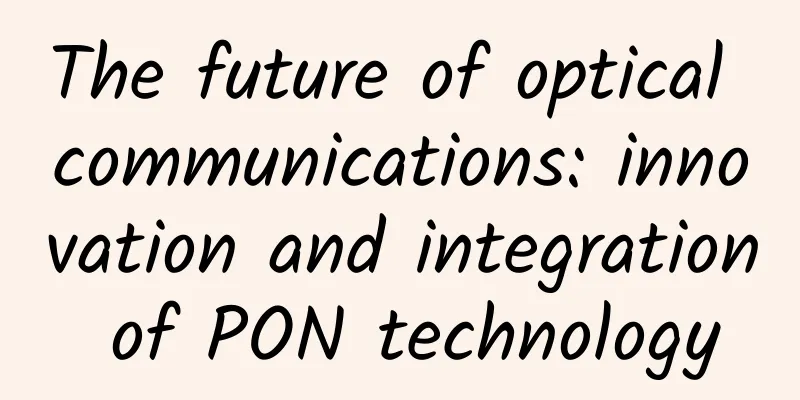How does 5G promote innovation in manufacturing?

|
5G technology is revolutionizing the way we communicate and transfer data, making it faster, more secure, and more efficient. With higher bandwidth and lower latency, 5G is enabling real-time communications between machines, sensors, cameras, and humans. 5G is creating smart factories, optimizing supply chains, and enabling augmented reality. 5G technology has the potential to revolutionize the manufacturing industry by enabling faster, more secure, more reliable and more efficient communications and data transmission. Here are some of the ways 5G is changing the manufacturing industry:
5G will be a catalyst for innovation in manufacturing, both in the creation and quality of products and in the way they are delivered through the supply chain. Challenges hindering widespread 5G adoption5G technology is still in its early stages, but it has already shown great potential to revolutionize various industries. However, there are several challenges that need to be addressed before 5G can be widely adopted. One of the most important obstacles is infrastructure. The deployment of 5G networks requires new equipment and infrastructure, such as small base stations and fiber optic cables. This requires significant investment from telecom operators and may take time to deploy the necessary infrastructure. Spectrum availability is another challenge facing 5G applications. 5G networks need access to large amounts of radio spectrum, but spectrum is limited and already in use by other wireless technologies. Governments and regulators need to allocate enough spectrum for 5G networks. However, this process can be complex and lengthy, and it may take years to provide enough spectrum for 5G networks. Security is also a major concern for 5G networks. 5G networks are more complex and interconnected than previous generations of wireless networks. This complexity can make them more vulnerable to cyberattacks. Therefore, having a secure and reliable network is essential. Telecom operators need to take security seriously and take appropriate measures to protect their networks. Lack of expertise could hinder mainstream adoption of 5G. With advances in various technologies such as IoT, cloud computing, artificial intelligence, AR/VR, manufacturers are having a hard time figuring out how to bring all of these together for maximum effect. They need experts who can understand these technologies and integrate them into existing infrastructure to realize the full potential of 5G. Which industries can benefit most from 5G?5G, the fifth generation of mobile networks, will significantly increase connectivity and data transfer speeds. Different industries can take advantage of 5G technology to enhance operations, but some will benefit more than others. The manufacturing industry can use 5G to enable real-time monitoring and control of production processes, predictive maintenance, and higher levels of automation. This can help manufacturers improve efficiency and productivity, thereby saving costs and increasing competitiveness. Another industry that could benefit from 5G is healthcare. By enabling faster and more reliable communications between medical professionals, 5G could facilitate better patient care. Additionally, 5G could support the use of remote patient monitoring and telemedicine, providing more convenient and cost-effective healthcare services. Transportation is another industry that can use 5G technology to great effect. With 5G, it will be possible to develop self-driving cars and support the use of real-time traffic data to improve traffic flow and reduce congestion. This can lead to safer and more efficient transportation systems. In the energy and utilities sector, 5G can help providers improve energy efficiency by monitoring and controlling energy consumption and distribution in real time. This can lead to cost savings, improved resource management, and more sustainable energy systems. The entertainment and media industry can also use 5G to support the development of new immersive and interactive experiences, such as virtual and augmented reality. This can enhance the user experience of gaming, sports and other forms of entertainment, leading to new business opportunities and increased revenue streams. |
<<: Summary of the "thread" model in IO flow
>>: Smart Encyclopedia | What is a 400G optical module?
Recommend
Ministry of Industry and Information Technology: The number of cellular IoT terminal users of the three major operators has reached 1.306 billion
Recently, the Ministry of Industry and Informatio...
RAKsmart: San Jose dedicated server from only $30/month, Korea/Hong Kong/Japan/US cluster servers, 1-10G bandwidth servers
RAKsmart is a foreign hosting company operated by...
5 Mac software that are so useful that you don't want to share them, each of them is a representative of black technology
[[385059]] I have shared a lot of Windows compute...
Interpretation of this article: A complete list of interfaces commonly used by engineers
As an engineer, you should often deal with interf...
Telecom operators tighten cloud sovereignty and no longer want to be the big guys behind the scenes
"Carrier cloud" represented by China Te...
The era of increased traffic is here! IPv6+ development will enter a new stage in 2022
In the "Three-Year Special Action Plan to In...
OneTechCloud VPS Hosting 20% off, US CN2 GIA/Hong Kong CN2/CMI large bandwidth/high defense optional
OneTechCloud (Yikeyun) launched this year's s...
OlinkCloud: San Jose dedicated server 60% off monthly payment starting at $71.4, triple-network AS9929 line
Olink.Cloud is a site under the old host company ...
Tudcloud: Hong Kong VPS with 20% off monthly payment and 30% off annual payment starting from $7.2/month, with options of large bandwidth or unlimited traffic
Tudcloud has launched this month's regular pr...
VMISS 30% off VPS monthly payment starting from 3.5 Canadian dollars, Korea/Japan/Los Angeles CN2 GIA/9929/CMIN2, etc.
VMISS has launched a special discount code for th...
What is AI intelligence engine?
From Apple's Siri, Google Assistant to Amazon...
2024 Cybersecurity Service Application Status Survey: Service Quality and Effectiveness Are the Biggest Application Challenges
As cybersecurity threats continue to evolve and e...
Ministry of Industry and Information Technology: Canceling the location of mobile phone numbers will increase the risk of telecommunications fraud
[[349030]] Can the location of mobile phone numbe...
Intelligent mining is an inevitable trend, and 5G commercialization has achieved remarkable results
At present, despite the rapid rise of new energy ...
What is DHCP Option 43? Have you learned it?
background When the AP and AC are in the same net...









